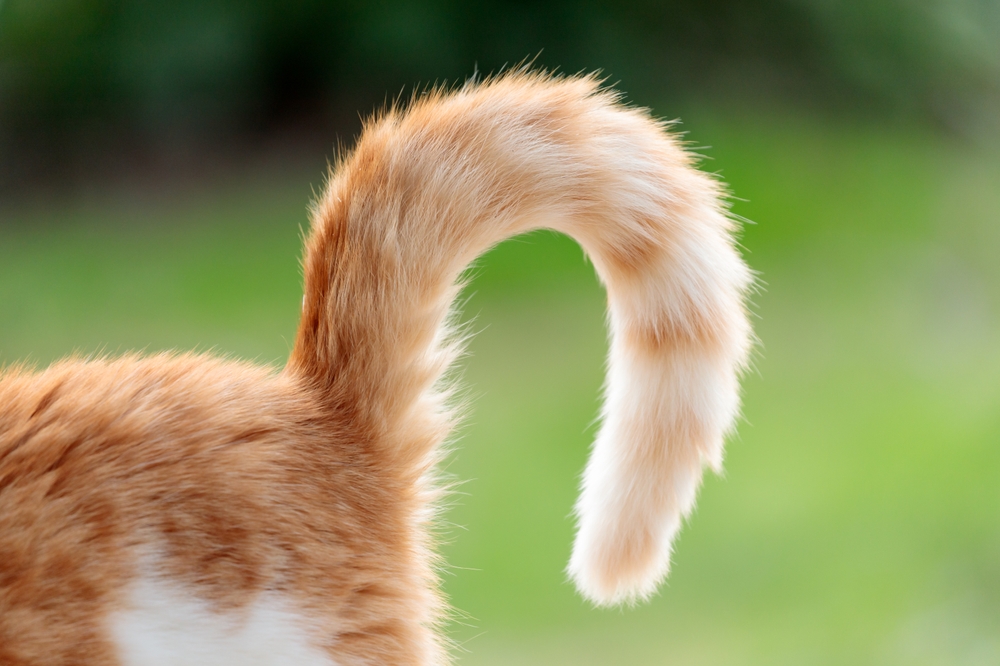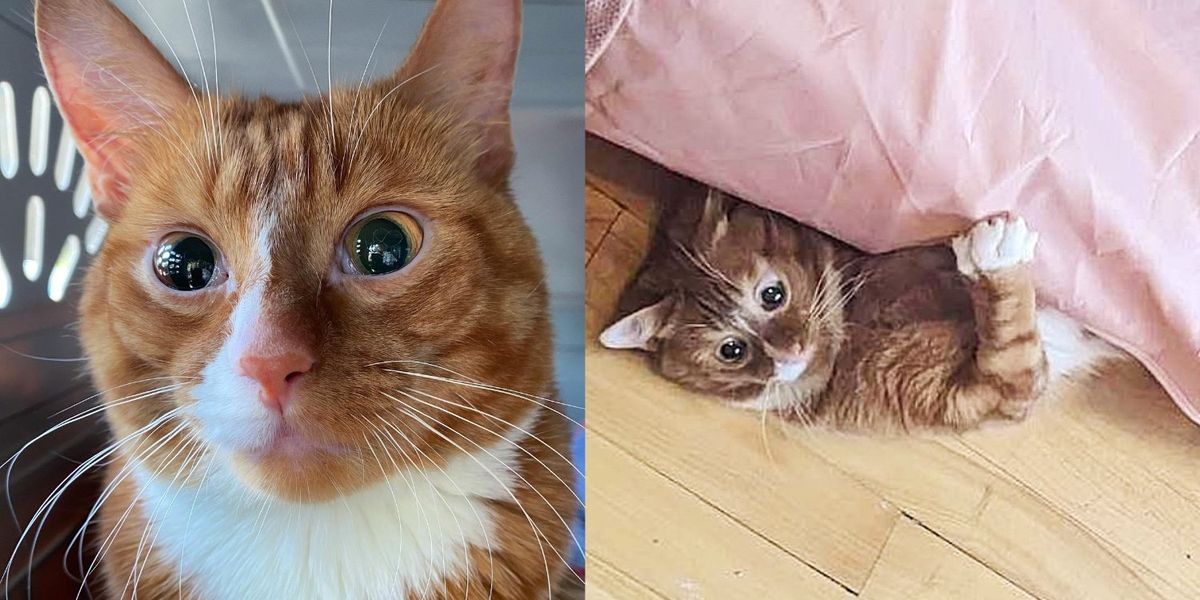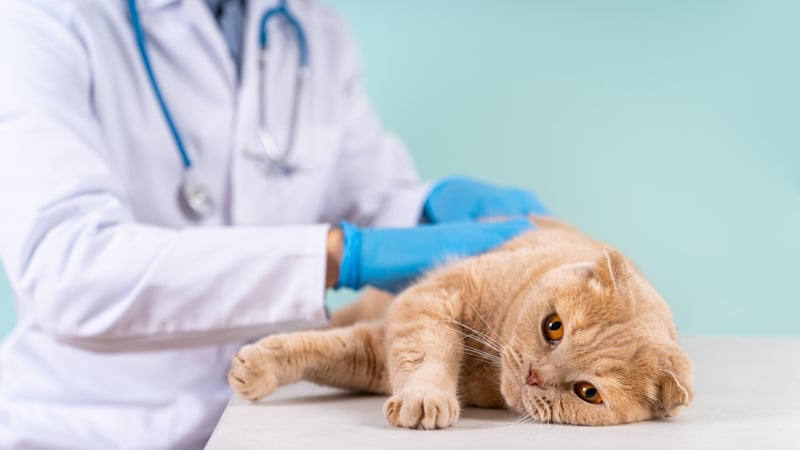Cat ownership would be a lot easier if our pets could tell us their thoughts. However, until someone develops a cat-to-human translator, we have to use context clues and our pet’s body language to decipher their moods.
A cat’s tail is one of the most expressive parts of their body. So, if your cat’s tail is twitching, you’re probably wondering what they’re thinking. Unfortunately, a quivering tail can mean many different things, so you’ll need to put on your thinking cap to determine what’s going on.
From the thrill of practicing their hunting skills to the frustration of aggravating situations, there are many potential reasons for your cat’s tail twitching. Read on to learn more so you can begin to better understand your cat’s mood and the driving forces behind this behavior.

The 6 Reasons Why Cats Twitch Their Tails
1. They’re Hunting
Cats will sometimes twitch their tails because they’re hunting or playing. This happens when they’re focused intensely on their prey, whether it’s a real-life mouse or a fluffy one you just bought from Amazon.
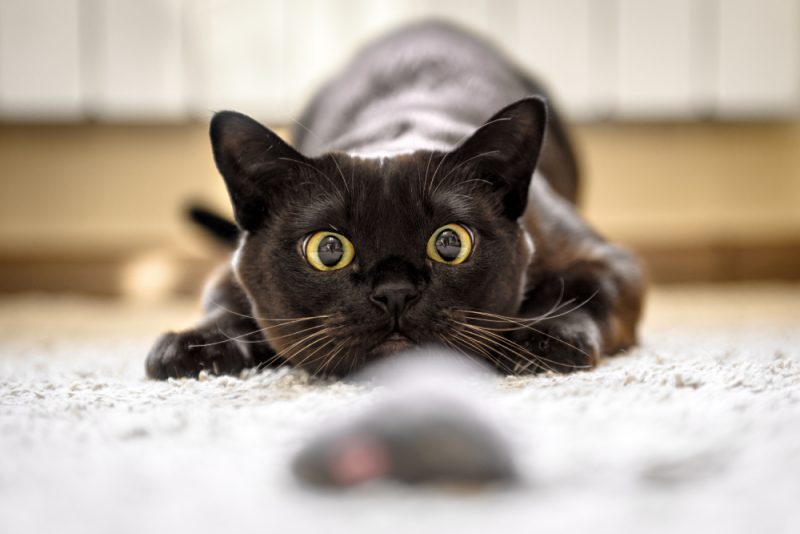
2. They’re Excited
When children are happy and excited, they often jump up and down as a way to release their pent-up energy and express their enthusiasm. Our cats don’t have the same ability to show their happiness, so a quivering tail can also mark anticipation and excitement.
3. They’re Annoyed
When your cat twitches the tip of their tail strongly from side to side, it may be that they’re mildly irritated or frustrated. This could be a warning sign that your pet isn’t fond of something you’ve been doing, but they’re not quite at the point yet where they’re going to take the next step and act on their annoyance.
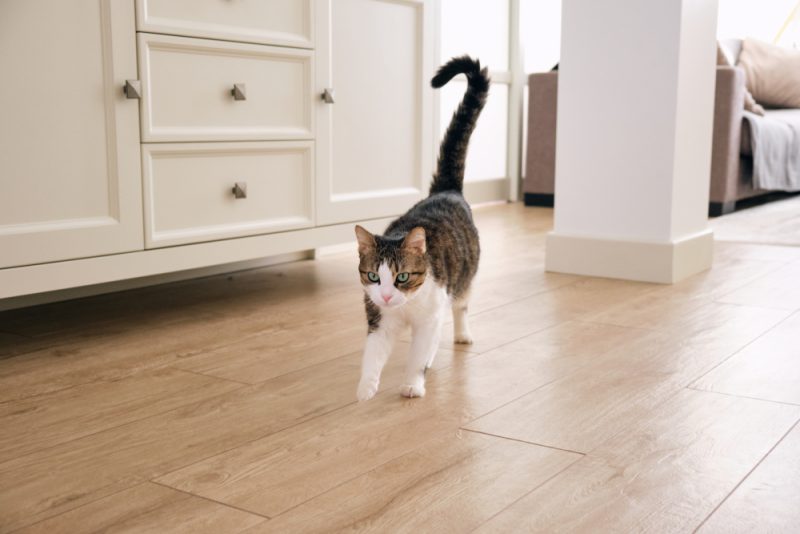
4. They’re Feeling Aggressive
Tail twitching is sometimes also associated with aggression. The more your pet’s tail moves back and forth, the less happy they may be. Rapid tail movements can mean they’re issuing a threat to you or another pet in the home. You might also see other aggressive behaviors, such as growling or hissing. Their tails may also thwack audibly on the floor or nearby walls.
5. They’re Spraying
You know your cat is spraying when they stand up, hold their tail straight up in the air, and put their rear end toward a target (e.g., walls, bedding, curtains, etc.). Their tail will be quivering, and they’ll spray urine onto an object.
Spraying is most likely to occur in cats that have reached sexual maturity, and it can occur in both male and female cats. It happens most often in intact males and females in heat, though those that have been spayed or neutered can also spray.
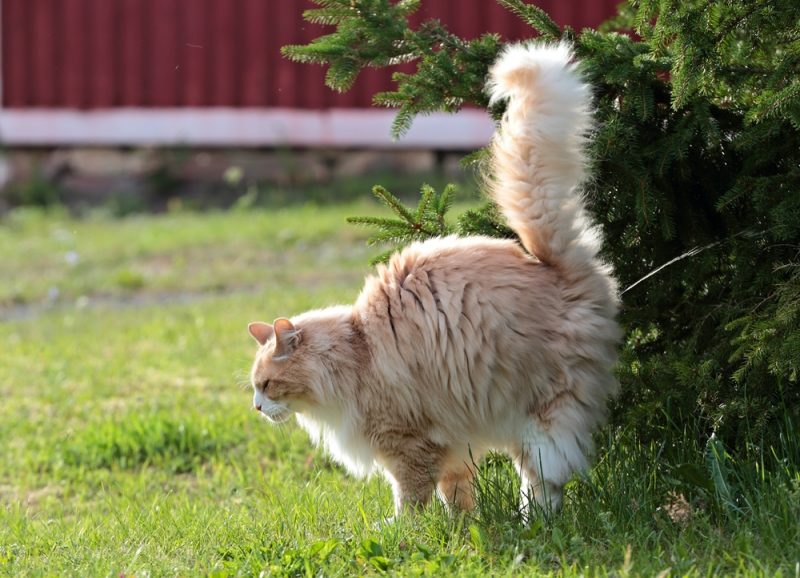
6. They Have Feline Hyperesthesia Syndrome
Feline hyperesthesia syndrome (FHS)—also known as “twitchy cat syndrome”—is a rare condition that causes increased sensitivity to touch and uncontrollable muscle contractions. FHS is poorly understood, and its root cause is still unknown, though it is most often attributed to neurological, psychological, or dermatological causes. Before it can be diagnosed, other conditions that cause similar signs must be ruled out.
Cats with this condition may quiver their tail, but they’ll often exhibit other signs, including:
- Rippling or twitching of skin on the back
- Biting or licking themselves (particularly in the back, side, and rear regions)
- Pain or discomfort when petted
- Dilated pupils
- Brief bursts of running
- Tail chasing

How Can I Know Why My Cat’s Tail Is Twitching?
With so many reasons for your cat’s tail twitching, it can feel impossible to determine what your cat is feeling. However, it’s actually relatively easy if you stop and consider your behavior and your kitty’s current environment.
Think about what your kitty is currently doing, their body language, and what’s going on around them to determine the exact reason for your pet’s tail twitching.
For example, a cat that your toddler is tormenting is unlikely to be twitching their tail out of excitement, especially if their ears are pulled back and they’re staring your child down. It’s much more likely in this scenario that your cat is feeling annoyed and ready to strike.
Likewise, if you’re using your cat’s favorite toy to play with them, it’s unlikely they’re twitching their tail because they’re spraying or feeling aggressive.
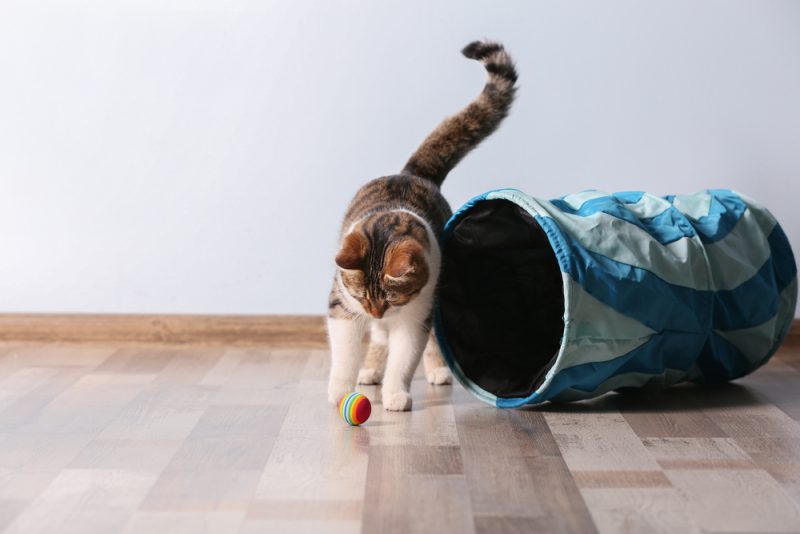
What Else Your Cat’s Tail Cat Tell You
Cats exhibit other tail postures aside from twitching because it’s one of the few ways they can convey their mood and communicate with other cats and humans.
| Question mark tail | Friendly, playful |
| Puffy tail | Afraid, defensive, or aggressive |
| Low tail | Unease or fear |
| Tucked under: | Fearful or anxious |
| Straight up: | Confident, happy, friendly |
| Wagging: | Angry, frustrated |
| Slow swish: | Focused, potentially hunting |
| Quick thrashing: | Annoyed, uncertainty |
How Else Do Cats Convey Mood?
Cats don’t only use their tails to convey their mood. Other subtle (and not so subtle) body language cues include:
- Facial expressions. The ways your cat moves their eyes, ears, and mouth can indicate their mood. Cats feeling relaxed will have normal eye and ear positioning, while those feeling angry will have erect ears and narrowed eyes. Cats with flattened ears and dilated pupils may be fearful.
- Eye contact. How much eye contact your cat is holding can tell you how relaxed or confrontational they’re feeling. Those slow blinking with a calm stare may feel comfortable and composed, while those staring without blinking may be challenging you.
- Posture. Cats exhibiting the classic black cat Halloween pose with an arched back and bottle brush tail are feeling aggressive or defensive, while those stretched out with their bellies up are relaxed and comfortable.
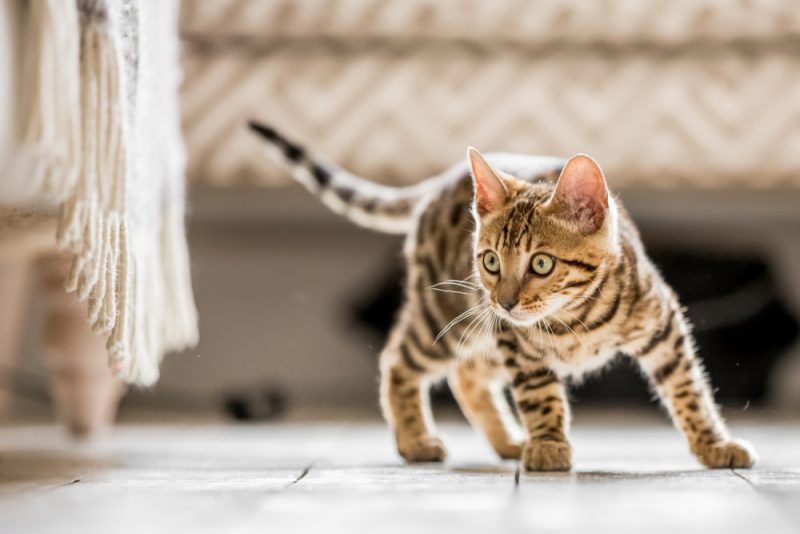

Final Thoughts
As you can see, a cat’s tail twitches can mean a lot of things. It’ll be hard to determine the exact reason behind your pet’s tail movements without also taking into account their body language and context clues from their environment. However, once you consider what else is happening in your cat’s world and how to read their body language, you’ll be an expert on your pet’s moods and feelings.
Featured Image Credit: olivier.laurent.photos, Shutterstock
